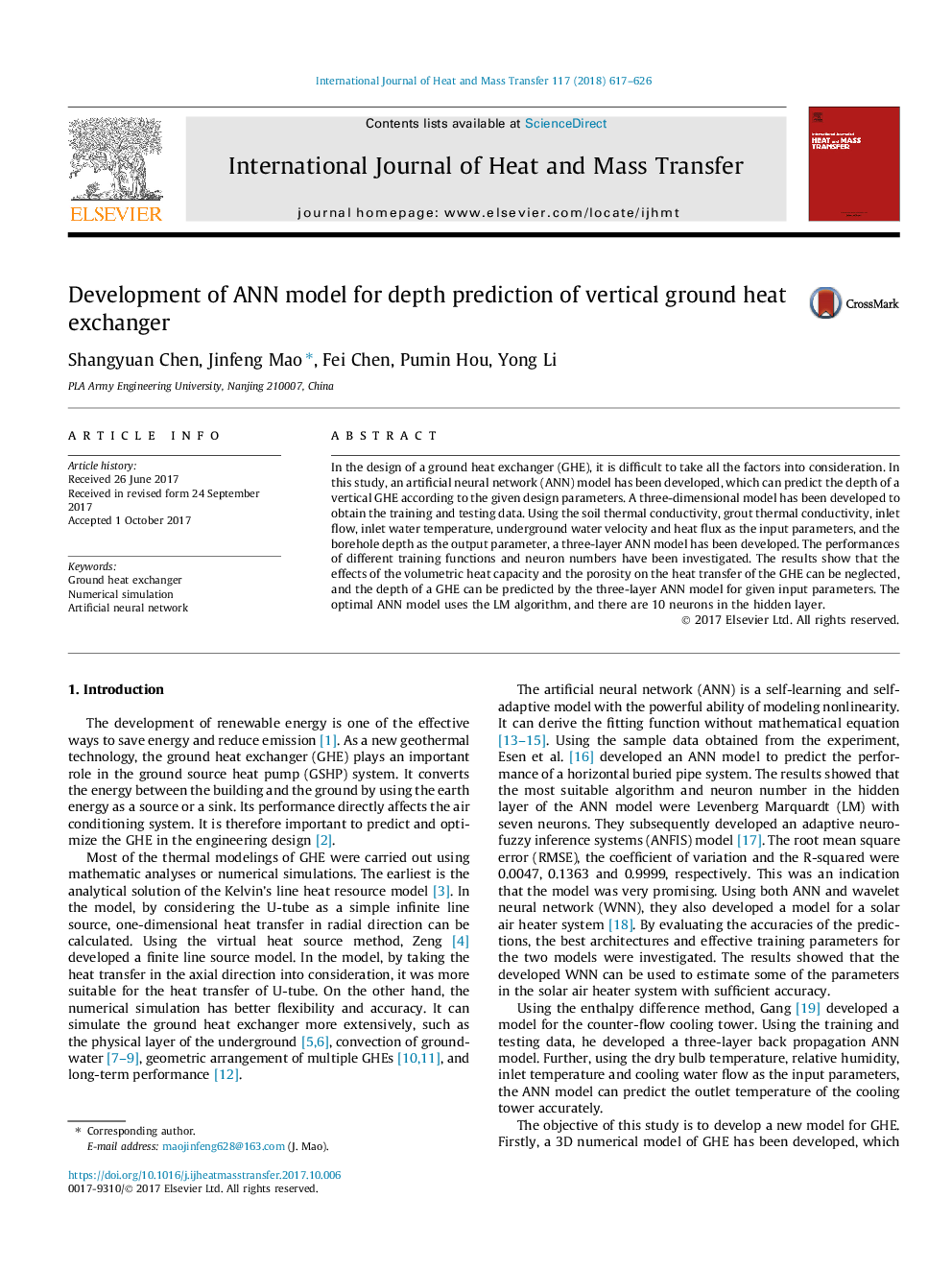| Article ID | Journal | Published Year | Pages | File Type |
|---|---|---|---|---|
| 4993427 | International Journal of Heat and Mass Transfer | 2018 | 10 Pages |
Abstract
In the design of a ground heat exchanger (GHE), it is difficult to take all the factors into consideration. In this study, an artificial neural network (ANN) model has been developed, which can predict the depth of a vertical GHE according to the given design parameters. A three-dimensional model has been developed to obtain the training and testing data. Using the soil thermal conductivity, grout thermal conductivity, inlet flow, inlet water temperature, underground water velocity and heat flux as the input parameters, and the borehole depth as the output parameter, a three-layer ANN model has been developed. The performances of different training functions and neuron numbers have been investigated. The results show that the effects of the volumetric heat capacity and the porosity on the heat transfer of the GHE can be neglected, and the depth of a GHE can be predicted by the three-layer ANN model for given input parameters. The optimal ANN model uses the LM algorithm, and there are 10 neurons in the hidden layer.
Related Topics
Physical Sciences and Engineering
Chemical Engineering
Fluid Flow and Transfer Processes
Authors
Shangyuan Chen, Jinfeng Mao, Fei Chen, Pumin Hou, Yong Li,
